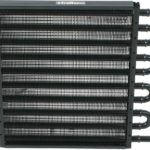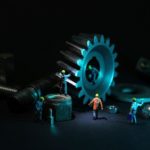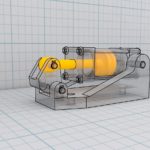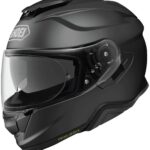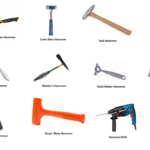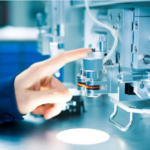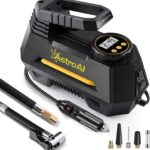首先,制药行业处理medications which includes the discovery, development, production, and marketing of different medicines. Thus, the pharmaceutical industry includes different types of businesses like research and development of drugs, manufacturing, and marketing of the medicines.

The pharmaceutical industry has extremely high standards for the quality of its products. In order to meet these standards, the equipment used in the manufacturing process must be made to precise specifications. But how todefine precisionto create parts with tight tolerances and a high degree of accuracy is essential in the production of pharmaceuticals.
The most common type of precision machining used in the pharmaceutical industry is CNC machining.CNC stands for Computer Numeric Control. This type of machining uses computer-controlled tools to create parts with a high degree of accuracy. The CAD models of the desired parts are fed into CNC machines. The CNC machines take information from the fed CAD model and start the process for the cut and shape of the final product. CNC machining is used to create both small and large parts for the pharmaceutical industry. It produces the part with high accuracy and in less time.
Why Pharmaceutical Equipment Highly Relies on Precision Machining
In order to get a better medical examination of the patients and avoid any kind of medical complications, doctors prefer to have high-quality and precise equipment. Precision machining is imperative in manufacturing of the pharmaceutical equipment due to the requirement of high precision and accuracy of the parts. With the use of CNC machining, the medical devices or parts of complex geometries can be made with high precision and accuracy. The different pharmaceutical equipment like Centrifuges, Dryers, Granulators, Capsule equipment, Blending equipment, Tablet presses, Filling Equipment, Coating machines, and, inspection machines are made by the CNC machining. The medical tooling designs of complex nature are manufactured by CNC machining.
Also Read:
- What is Electrical Discharge Machining (EDM) Process and How it Works?
- Ultrasonic Machining (USM) – Main Parts, Working Principle, Advantages and Disadvantages with Application
- Water Jet Machining – Working Principle, Advantages and Disadvantages with Application
How Precision Machining Ensures the Quality of Parts
The quality of the different parts of the medical equipment is ensured by different parameters using precision machining.
1. Tight tolerances
Most of the medical equipment parts are of small size especially those components which are inserted into the human body. The reason for the small size is that it helps patients to heal faster. In these kinds of medical instruments, the inclusion of small tight tolerances is imperative. The tight tolerances in the range of 0.001” are possible with the use of CNC machining. The medical instruments can be made with tighter tolerances by using quality CNC machines, balance tool holders, sharp cutting tools, and skilled machine operators. The cost will be higher for the tighter tolerances. The type of tolerances of the parts may also affect the choice of the CNC machines.
2. High Accuracy
Due to the absence of manual intervention during manufacturing and autonomous operation, the possibility of human errors in manufacturing reduces which results in the production of medical equipment parts with high accuracy. In CNC machining, the codes are written to control the machinery like the movement of the tools or parts, spindle speed, etc. As some of the parts are made in higher numbers, consistency is also maintained during the complete production of the multiple parts. Also, quality standards are met with the continuous production of the parts.

3. Complex geometry
Depending upon the complexity of the parts, differenttypes of CNC machinesare used for the manufacturing of complex parts. A CNClathe machine, a three-axis CNCmilling machine, or a five-axis machining Centre can be used for the manufacturing of complex parts. The selection of the CNC machine will be depended on the complexity, dimensions, and geometry of the parts. The complex parts are difficult to make because of increasing complexity, time for manufacturing, and machining cost. In order to have a simple design, the design engineer is required to put more effort during the design phase. Precision machining is preferred in the case of manufacturing complex parts because of less involvement of labor and the high precision of the CNC machines. In some cases, complex parts to required so 5-axis CNC machining is used for complex parts and complex shapes. The more the part is complex, the more will be the CNC machining cost.
Case Study:
A Precision Pharmaceutical Equipment Parts that Meet Strict Standards
There are different parts of pharmaceutical equipment that meet strict standards when they are manufactured. Tablet pressing is one of the important processes in which powder material is compressed into tablet form. This compression process of granule to solid mass (known as a tablet) is fulfilled by the use of a compression machine. In pharmaceutical industries, different types of compression machines like single punch compression or rotary compression are used depending upon the shape of the tablets.
The conventional single compression machine compresses one tablet at one time with a single die and one upper and lower punch. A rotary type machine also known as a multi-station compression machine is a high-speed machine that uses multiple punches and dies which results in larger production of tablets in a single round. The rotary compression machine works on the principle of the pressure in which pressure is applied with the help of punches on the powder/granules in the cavity. The complete compression process of tablets consists of four stages i.e Filling, Metering, Compression, and Ejection.
In the first stage of filling, the powder is filled in the cavity, and in the second stage weight is adjusted according to the given specifications and the extra material is removed during this process. In the third stage of compression, pressure is applied to the powder to compress it into the solid compact mass form (known as a tablet). The final stage is the ejection of the tablet from the die. All these four processes are fulfilled with the help of a complex machine known as a Rotary compression machine. The rotary compression machine consists of the important parts that play an imperative role in the compression of the tablets. These parts are Hopper, Feeder, Dies, Punches, Cams, Turret, Compression Rollers, Discharging Chute, and Lubrication system. The turret is the main part of the compression machine also known as the heart of the machine. The punches and dies are installed in the turret and it determines how many dies or punches will be installed in the rotary compression machine. The rotation of the turret also controls the speed of the compression machine.

These different parts of the rotary compression machine are manufactured with high precision machining by following strict standards. CNC machining is preferred to precisely design and manufacture the components of the machine with high precision and low maintenance. The complex geometry of rotary turret having gears surface and grooves are precisely made by CNC machining by meeting strict standards.
The Future of Precision Machining in the Pharmaceutical Industry
In the modern medical industry, precision machining (CNC Machining) is one of the most essential tools of manufacturing. With the passage of time, developments in CNC machining are making the manufacturing process faster and cheaper. The increase in the axis of CNC machines and use of the robots in CNC machining significantly accelerates the manufacturing process in the pharmaceutical industry. With the new invention in the field of manufacturing with CNC machining, robotics, andArtificial intelligence, it is even easier to make parts with higher accuracy and in relatively less time. The medical parts with complex geometry, high accuracy, and tighter tolerances are preferred to be made by precision machining I.e CNC machining.

